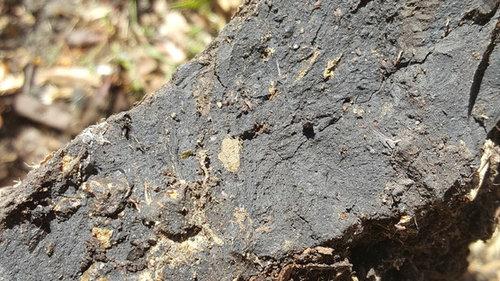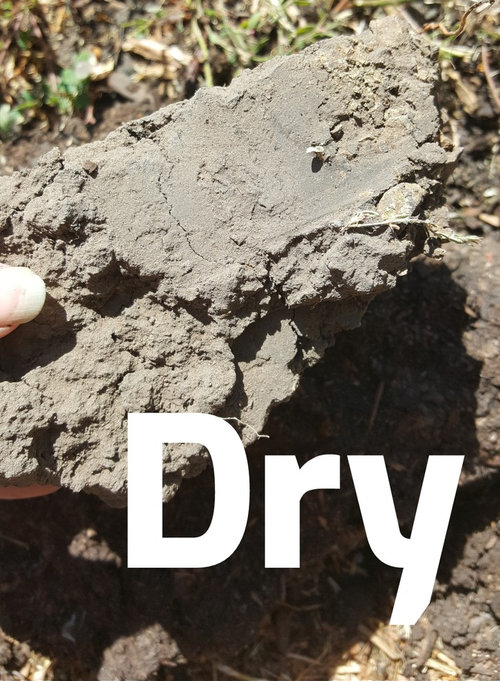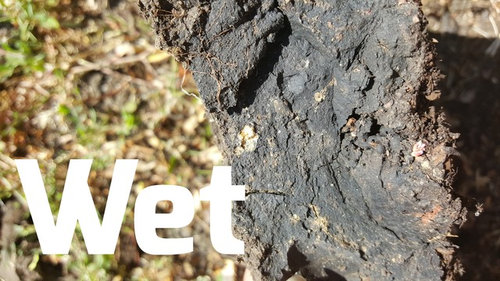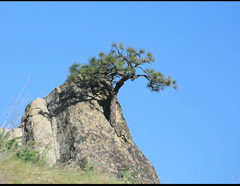How do I fix this awful, awful clay?
Tristan
6 years ago
last modified: 6 years ago
Featured Answer
Sort by:Oldest
Comments (38)
Embothrium
6 years agolast modified: 6 years agoTristan
6 years agoRelated Discussions
I feel awful approaching menopause--do you??
Comments (5)I truly believe that there are some of us who are so dependent on our female hormones, that life becomes pretty bad for us, during this adjustment period. I was diagnosed with fibromyalgia shortly before I began having irregular periods, at around age 46. I developed sleep problems, IBS, migraines, severe joint and muscle pains and overwhelming fatigue. I thought it was all my fibromyalgia.....but I've talked to alot of women who seem to develop these symptoms, as they enter perimenopause. I saw tons of doctors and had tons of tests, and they were all normal. Over the past 10 years, I've learned to deal with most of the problems. The fatigue has definitely gotten better, but I still have the IBS and sleep problems. I'm sorry I don't have any good advice for you, except to be sure its nothing else going on, and then read up on fibromyalgia and what things you might do to feel better. I know menopause isn't a disease........but for some of us, it sure feels like one. I learned how to budget my energy so that I could get a few things done in the morning, when I had the most energy. I definitely had to re-assess alot of things, and stop expecting myself to be able to do what I used to. Fortunately, I had a very understanding family. I tried Wellbutrin for awhile, but it made me too nervous. Drugs like Welbutrin, Provigil might help you with your severe fatigue. But then coming off of drugs like that can be a challenge in itself. About all you can do right now is try to custom-make a plan for yourself, including diet, exercise, and alot of rest. Good luck to you....See MoreUnderside stitches look awful--what am I doing wrong?
Comments (10)I ... quilted at a very fast speed. I'm not sure exactly what this means, but I suspect that this could be the problem, or at least part of it. If the needle is going up and down very fast, you still want the quilt sandwich to move very slowly, so that it is making regular size stitches. Big stitches, even if there are just a few here and there, mean the quilt sandwich is moving too quickly. You need to learn to move the fabric at a steady rate, no matter the direction or tightness or looseness of the curves. Practice on small scraps. You must have a light touch. Just your fingertips. If you pull the sandwich, you'll cause the stitches on the back side to pull. When I first started to free motion quilt, I gripped the sandwich tightly, and dragged it back and forth under the needle. The fabric moved rather quickly. I liked the way it looked on the front side, but the back was a disaster! My stitches pulled so badly that I could see a lot of the top thread on the back side. And thread didn't even stay where the needle had gone through, but pulled to the inside of every curve. Since then, I have slowed waaaaay down. But the needle still moves relatively fast. And I have learned to hold the fabric gently. I did a lot of practice with scraps. I put different colors of thread in the top vs. the bobbin. And I used muslin so I could see every stitch, until I got the hang of it. Some computerized machines have a feature that regulates the maximum speed. You can press down on the gas pedal as hard as you want, and it tops out at a pre-set speed. This is very useful for learning the steady speed aspect of free motion quilting. I have seen the Bernina Stitch Regulator on TV and in person. Seems nice, but if you can just learn to move the sandwich at a steady rate all by yourself, you don't need anything that fancy....See MoreHow awful do these dining chairs look?
Comments (44)Before you go and pay retail, have you look at consignment stores? It may be possible to buy a whole set for much less than you'd pay for the just the chairs at retail. One other question: out of all the photos you posted, which one shows the true color of the chairs? The color in the 5th photo is very nice........but the 6th photo is not very appealing. If they're darker, I think they'll look fine if you add a larger arrangement/decorative pieces on the table and change the seat fabric to one that is a little warmer. Take into consideration your overall decor and whether the eclectic mix of chairs & table fit in better than a formal matched set.....then make your decision. The more I look at your photos the more the chairs are growing on me! ;)...See MoreWhat can I do about this awful texture?
Comments (4)It looks like what we use to call Kool Deck. Often used around pools to help not burn feet and help to keep from slipping....See MoreEmbothrium
6 years agolast modified: 6 years agotete_a_tete
6 years agotete_a_tete
6 years agotrickyputt
6 years agolast modified: 6 years agotete_a_tete
6 years agomad_gallica (z5 Eastern NY)
6 years agokimmq
6 years agotheparsley
6 years agorgreen48
6 years agolast modified: 6 years agoglib
6 years agoglib
6 years agoTristan
6 years agoglib
6 years agowaynedanielson
6 years agoTristan
6 years agoEmbothrium
6 years agolast modified: 6 years agoTristan
6 years agoglib
6 years agowaynedanielson
6 years agotrickyputt
6 years agoTristan
6 years agolast modified: 6 years agotrickyputt
6 years agotete_a_tete
6 years agolast modified: 6 years agotrickyputt
6 years agolast modified: 6 years agokimmq
6 years agoarmoured
6 years agoTristan
6 years agoEmbothrium
6 years agolast modified: 6 years agoglib
6 years agolast modified: 6 years agoTristan
6 years agoglib
6 years agotete_a_tete
6 years agolast modified: 6 years agokimmq
6 years agotoxcrusadr
6 years agoglib
6 years ago
Related Stories

GARDENING GUIDESHow to Stop Worrying and Start Loving Clay Soil
Clay has many more benefits than you might imagine
Full Story
KITCHEN DESIGN6 Kitchen Fixes for Nomads
Renting? Some Affordable Ways to Make That Kitchen Feel Like Your Own
Full Story
LIFEHouzz Call: Show Us Your Nutty Home Fixes
If you've masterminded a solution — silly or ingenious — to a home issue, we want to know
Full Story
GARDENING GUIDESGardening Solutions for Heavy Clay Soils
What’s a gardener to do with soil that’s easily compacted and has poor drainage? Find out here
Full Story
HOUSEKEEPINGHow to Fix a Stinky Garbage Disposal
No plumber’s fee or even a trip to the hardware store is required with these easy solutions
Full Story
KITCHEN DESIGNKitchen Design Fix: How to Fit an Island Into a Small Kitchen
Maximize your cooking prep area and storage even if your kitchen isn't huge with an island sized and styled to fit
Full Story
SELLING YOUR HOUSEFix It or Not? What to Know When Prepping Your Home for Sale
Find out whether a repair is worth making before you put your house on the market
Full Story
DECORATING GUIDESThe Dumbest Decorating Decisions I’ve Ever Made
Caution: Do not try these at home
Full Story
BEFORE AND AFTERSKitchen Rehab: Don’t Nix It, Fix It
A small makeover makes a big impact in a traditional kitchen in Atlanta with great bones
Full Story
DECORATING GUIDES10 Easy Fixes for That Nearly Perfect House You Want to Buy
Find out the common flaws that shouldn’t be deal-breakers — and a few that should give you pause
Full Story









TristanOriginal Author